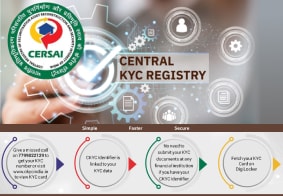CKYC Registry
-
Customer Service Contact us Service request Locate a branch
Find all the help you need
Scan the QR, get our app, and find help on your fingertips

Help CenterSupport topics, Contact us, FAQs and more
-
Login
Are you ready for an upgrade?
Login to the new experience with best features and services
-
Login
Are you ready for an upgrade?
Login to the new experience with best features and services
- Accounts
-
Deposits
IDFC FIRST Bank Deposits
View all Deposits -
Loans
IDFC FIRST Bank Loans
View all Loans - Wealth & Insure
-
Payments
IDFC FIRST Bank Payments
View all Payments -
Cards
IDFC FIRST Bank Cards
View all Cards - Blogs
- Corporate Account
-
Cash Management Services
IDFC FIRST Bank Cash Management Services
View all Cash Management Services - Supply Chain Finance
-
Corporate Lending
IDFC FIRST Bank Lending
View all -
Treasury
IDFC FIRST Bank Treasury
See more details - NBFC Financing
Support topics, Contact us, FAQs and more
- IDFC FIRST Bank Accounts
-
Savings Account
-
Corporate Salary
Account -
Senior Citizens
Savings Account -
First Power
Account -
Current Account
-
NRI Savings
Account -
TASC Institutional
Account -
Savings Account
Interest Calculator
- IDFC FIRST Bank Deposits
-
Fixed Deposit
-
Recurring Deposit
-
NRI Fixed Deposit
-
Safe Deposit Locker
-
FD Calculator
-
RD Calculator
- IDFC FIRST Bank Loans
-
Personal Loan
-
Consumer Durable
Loan -
Home Loan
-
Business Loan
-
Professional Loan
-
Education Loan
-
New Car Loan
-
Pre-owned Car Loan
-
Two Wheeler Loan
-
Pre-owned Two
Wheeler Loan -
Commercial Vehicle
Loan -
Gold Loan
-
Loan Against Property
-
Loan Against Securities
-
Easy Buy EMI card
-
Personal Loan
EMI Calculator -
Education Loan
EMI Calculator -
Home Loan
EMI Calculator
- IDFC FIRST Bank Wealth & Insure
-
FIRST Select
-
FIRST Wealth
-
FIRST Private
-
Mutual Funds
-
Sovereign Gold Bond
-
Demat Account
-
Term Insurance
-
Life Insurance
-
Health Insurance
-
General Insurance
-
Bonds
-
Loan Against
Securities -
Portfolio Management
Service
- IDFC FIRST Bank Payments
-
FASTag
-
Credit Card
Bill Payments -
UPI
-
Funds Transfer
-
Forex Services
-
Pay Loan EMI
- IDFC FIRST Bank Cards
-
Ashva :
Metal Credit Card -
Mayura :
Metal Credit Card -
FIRST Millennia
Credit Card -
FIRST Classic
Credit Card -
FIRST Select
Credit Card -
FIRST Wealth
Credit Card -
FIRST WOW!
Credit Card -
Deals
-
Debit Cards
-
Co-branded Cards
-
Credit Card
EMI Calculator -
FIRST Corporate
Credit Card -
FIRST Purchase
Credit Card -
FIRST Business
Credit Card
- Premium Metal Credit Cards
-
AshvaLifestyle1% Forex₹2,999
-
MayuraLifestyleZero Forex₹5,999
-
FIRST PrivateInvite Only
- Best for travellers
-
MayuraZero ForexMetal₹5,999
-
Ashva1% ForexMetal₹2,999
-
FIRST WOW!Zero ForexTravelLifetime Free
-
FIRST SWYPTravel OffersEMI₹499
-
FIRST Select1.99% ForexLifestyleLifetime Free
-
FIRST Wealth1.5% ForexLifestyleLifetime Free
-
Club VistaraTravelLifestyle₹4,999
-
IndiGo IDFC FIRST Dual Credit CardTravelLifestyle₹4,999
- Max benefits, Free for life
-
FIRST Classic10X RewardsShoppingNever Expiring Rewards
-
FIRST Millennia10X RewardsShoppingNever Expiring Rewards
-
FIRST Select10X RewardsLifestyle1.99% Forex
-
FIRST Wealth10X RewardsLifestyle1.5% Forex
-
FIRST WOW!RewardsTravelZero Forex
-
LIC ClassicRewardsInsuranceShopping
-
LIC SelectRewardsInsuranceShopping
- Reward Multipliers
-
AshvaLifestyleMetal₹2,999
-
MayuraLifestyleZero Forex₹5,999
-
FIRST ClassicNever Expiring RewardsShoppingLifetime Free
-
FIRST MillenniaNever Expiring RewardsShoppingLifetime Free
-
FIRST SelectNever Expiring RewardsLifestyleLifetime Free
-
FIRST WealthNever Expiring RewardsLifestyleLifetime Free
- Rewards & Credit on UPI
-
FIRST Power+FuelUPI₹499
-
FIRST PowerFuelUPI₹199
-
FIRST EA₹NVirtual1% Cashback₹499
-
FIRST DigitalVirtualUPI₹199
-
IndiGo IDFC FIRST Dual Credit CardUPITravelDual cards
- Fuel and Savings
-
FIRST PowerRewardsUPI₹199
-
FIRST Power+RewardsUPI₹499
-
LIC ClassicRewardsInsuranceShopping
-
LIC SelectRewardsInsuranceShopping
- Express and Flaunt
-
AshvaMetal1% Forex₹2,999
-
MayuraMetalZero Forex₹5,999
-
FIRST SWYPEMIOfferMAX₹499
-
FIRST MillenniaRewardsShoppingLifetime Free
- FD Backed rewarding Credit Cards for all
-
FIRST EA₹NVirtualCashback₹499
-
FIRST WOW!Zero ForexTravelLifetime Free
-
CreditPro Balance TransferTransfer & SaveReduce InterestPay Smartly
- IDFC FIRST Bank NRI Forex Solutions
-
Send money to India-Wire transfer
-
Send money to India-Digitally
-
Send money abroad
-
Max Returns FD (INR)
- IDFC FIRST Bank MSME Accounts
-
Platinum Current
Account -
Gold
Current Account -
Silver Plus
Current Account -
Merchant Multiplier
Account -
Agri Multiplier
Account -
TASC Institutional
Account -
Dynamic Current
Account -
World business
Account -
First Startup
Current Account
- IDFC FIRST Bank Business Loans
-
Business Loan
-
Professional Loan
-
Loan Against Property
-
Business Loan for Women
-
Working Capital Loan
-
Construction Equipment Loan
-
Machinery Loan
-
Healthcare Equipment Loan
- IDFC FIRST Bank Business Solutions
-
Payment Solutions
-
Tax Payments
-
Doorstep Banking
-
Point of Sale (POS)
-
Escrow Accounts
-
NACH
-
Payment Gateway
-
UPI
-
Virtual Accounts
-
As per amendment in the Income Tax Rules, PAN or Aadhaar are to be mandatorily quoted for cash deposit or withdrawal aggregating to Rupees twenty lakhs or more in a FY. Please update your PAN or Aadhaar. Kindly reach out to the Bank’s contact center on 1800 10 888 or visit the nearest IDFC FIRST Bank branch for further queries.
-
-
Most Searched
Sorry!
We couldn’t find ‘’ in our website
Here is what you can do :
- Try checking the spelling and search
- Search from below suggestions instead
- Widen your search & try a more generic keyword
Suggested
Get a Credit Card
Enjoy Zero Charges on All Commonly Used Savings Account Services
Open Account Now
Personal Loan
How Does Personal Loan Interest Work in India?
Key Takeaways
Personal loan interest in India is usually charged on a reducing balance basis, where you pay interest only on your outstanding loan amount.
The interest component makes up a higher portion of your EMI in the beginning of your loan tenure, and decreases with time.
Multiple factors like income, credit score, and employer profile can impact the personal loan interest rate offered to you.
IDFC FIRST Bank’s FIRSTmoney Personal Loan offers transparency with interest rates starting at 9.99% p.a., zero foreclosure charges, and a 100% digital process.
If you’ve ever taken a personal loan or are planning to take one, you’ve probably asked yourself: “How much interest am I paying for this personal loan?”
This is an important question, especially for those who want to make responsible borrowing decisions. While many lenders advertise low personal loan interest rates, the method of calculation and the charges applicable can significantly impact how much you’ll actually repay.
Read on to know more about how personal loan interest rates work in India.
Flat Rate vs. Reducing Balance Method
Banks and NBFCs may use either a flat rate or a reducing balance method to calculate interest on your personal loan.
How the flat rate method works
Interest is charged on the entire loan amount for the full tenure, regardless of how much principal you’ve already repaid.
How the reducing balance method works
Interest is charged only on the outstanding principal, which decreases with every EMI.
👉 Example: For a loan amount of ₹1,00,000 for 3 years at 12% p.a.:
- With Flat Rate: You’d pay ₹36,000 in interest.
- With Reducing Balance: You’d pay only about ₹19,800 in interest.
That’s a 45% saving just because of the interest calculation method used.
💡 With FIRSTmoney Personal Loan from IDFC FIRST Bank, interest is always charged on a reducing balance basis, ensuring fairness and transparency. Further, if you want to close your loan early, you can do so without any foreclosure charges.
Types of Personal Loan Interest Rates
When applying for a loan, it’s important to know the type of rate you are offered by the bank:
- Fixed Rate of Interest: The rate remains constant throughout the tenure. Your EMI doesn’t change, ensuring predictability.
- Floating Rate of Interest: The rate may vary based on market conditions or external benchmarks. Your EMI could go up or down accordingly.
💡 Most personal loans in India, including IDFC FIRST Bank’s FIRSTmoney Personal Loan, come with fixed interest rates, helping you plan your finances with certainty.
READ MORE
Factors Affecting Personal Loan Interest Rates
The rate offered to you is not just about the bank—it’s also about your financial profile. Key factors include:
- Credit Score: A higher CIBIL score (750+) often gets you lower personal loan interest rates. In fact, for a FIRSTmoney personal loan you need a CIBIL score of just 730 and above.
- Income Level: Higher and stable monthly income improves eligibility and may reduce rates.
- Employment: Working with a reputed or listed company may fetch you better terms.
- Loan Amount and Tenure: The total amount you borrow and the tenure you choose can affect your loan rate of interest. Longer tenures may have slightly higher effective costs.
- Debt to income ratio (DTI): Having a low DTI ratio, that is when you have low EMI obligations as compared to your monthly income, increases your chances of getting a lower rate.
- Existing Relationship with the Bank: Customers with salary accounts or good repayment history often enjoy better loan rates.
How Personal Loan EMIs Are Structured
Now that you know how the personal loan interest rate works, here’s a brief breakdown of how your EMI is structured using a reducing balance method.
Your monthly personal loan EMI is made up of two parts: the principal and interest components.
At the start of your repayment, the interest portion is higher because your outstanding balance is larger. Over time, as your principal reduces, the principal share in each EMI increases.
👉 For example: For a ₹1,00,000 personal loan at 9.99% interest for 3 years, your EMI will be ₹3,226/ Month. The breakup of the EMI will be as follows:
- Month 1: Interest = ₹833; Principal = ₹2,394.
- Month 36: Interest = ₹27; Principal = ₹3,199.
You can find how the proportions change over 36 months by using this personal loan EMI calculator . It gives a detailed amortization schedule for a particular loan offer.
💡An amortization schedule is the exact breakdown of how your EMI is split between principal and interest on a monthly basis. It’s a useful tool that helps in budgeting and understanding the impact of early repayments.
How to Secure A Low Personal Loan Interest Rate
If you’re aiming for the lowest personal loan interest rate, here’s how to improve your chances:
- Maintain a high credit score by paying EMIs and credit card bills on time.
- Avoid multiple loan applications within a short span as they impact your creditworthiness.
- Choose the right tenure that balances EMI affordability with total interest outgo.
- Take advantage of your banking relationship to get favourable terms and interest rates.
- Compare lenders and use calculators to see the actual EMI and total cost before finalizing.
- Have a stable income as it strengthens your eligibility for a personal loan.
Why FIRSTmoney Personal Loan Stands Out
With IDFC FIRST Bank, you get more than just a competitive personal loan interest rate. You also enjoy:
- Reducing balance method for interest calculations.
- 100% digital application, that requires only your Aadhaar and PAN number and your physical PAN card for video KYC.
- Zero foreclosure charges, giving you the freedom to close your loan early.
- Interest payable only on the amount withdrawn from the approved loan offer.
👉 Apply for FIRSTmoney Personal Loan today and borrow with complete clarity.
Smart Tips Before Taking a Personal Loan
- Always ensure the lender is using a reducing balance method.
- Compare the total cost of borrowing and not just the advertised rate.
- Use a personal loan calculator to estimate EMI and overall outgo.
- Check the foreclosure and prepayment charges carefully.
Frequently Asked Questions
Which bank has the lowest interest rate on personal loans?
IDFC FIRST Bank’s FIRSTmoney Personal Loan starts at just 9.99% p.a., among the most competitive in India.
What is the difference between flat rate and reducing balance interest?
Flat rate calculates interest on the full amount throughout the tenure, while reducing balance charges interest only on the outstanding principal.
Why is my first EMI mostly interest?
In the initial months, the outstanding principal is higher, so the interest component is higher. Over time, the principal repayment increases.
Can I close my personal loan without penalty?
Yes. With FIRSTmoney Personal Loan, you can foreclose your loan without any charges.
How to calculate my personal loan EMI?
Use a personal loan EMI calculator available on most bank websites (including IDFC FIRST Bank) to get quick EMI and total cost estimates.
Disclaimer
The contents of this article/infographic/picture/video are meant solely for information purposes. The contents are generic in nature and for informational purposes only. It is not a substitute for specific advice in your own circumstances. The information is subject to updation, completion, revision, verification and amendment and the same may change materially. The information is not intended for distribution or use by any person in any jurisdiction where such distribution or use would be contrary to law or regulation or would subject IDFC FIRST Bank or its affiliates to any licensing or registration requirements. IDFC FIRST Bank shall not be responsible for any direct/indirect loss or liability incurred by the reader for taking any financial decisions based on the contents and information mentioned. Please consult your financial advisor before making any financial decision.
The features, benefits and offers mentioned in the article are applicable as on the day of publication of this blog and is subject to change without notice. The contents herein are also subject to other product specific terms and conditions and any third party terms and conditions, as applicable. Please refer our website www.idfcfirstbank.com for latest updates.























